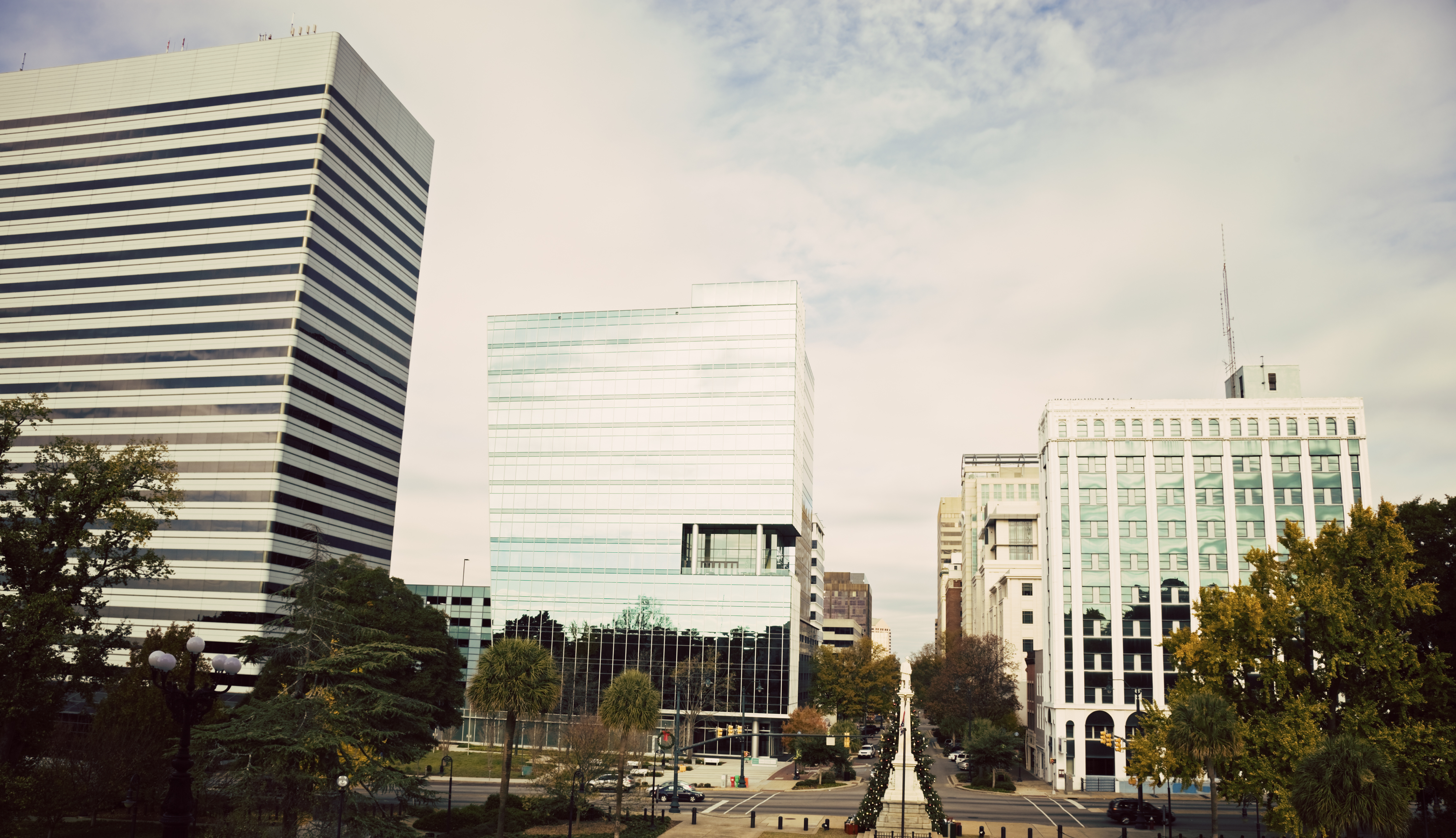Our History
On May 2, 1986, former governor Robert E. McNair and banker Carl L. Brazell mailed a letter to a couple of dozen Columbians. The letter began: “We would like for you to join with us and a few very select people to determine Columbia’s level of interest in organizing a private club to be located on the top floor of the new AT&T building. We feel this club presents a wonderful opportunity to bring Columbia into a new era, and hope it would provide the finest facilities and services, at a very prestigious location, with membership open to all qualified citizens.”
Today, the McNair-Brazell letter reads like a simple, straightforward statement of purpose, a matter-of-fact approach to a problem that would be relatively easy to tackle. But considering the context of the times, that is deceptive. Those who met on June 2, 1986, were intent on changing social and business compacts that had been in place for so long as to seem entrenched.
A need to change discriminatory practices was actively discussed at cocktail parties, at the Chamber of Commerce and among leaders of area civic clubs. Some groups, including the Chamber, adopted policies that prohibited official functions at clubs that discriminate. “Columbia, to move into the 21st century, is going to have to open itself up,” said McNair. “We need business clubs that are open.”
The group McNair helped gather, which included men and women, blacks and whites, met this challenge. There were 17 people at the initial meeting, which was held in the boardroom of GMK Associates on Elmwood. William N. “Bill” Geiger Jr., a partner in this architectural firm, was the developer of the AT&T building. The ad hoc committee set about gauging membership interest. By early 1987, The Capital City Club (still only a concept without an official name) had 450 paid membership applications. It would take close to 1,000 Members and $2 million in capital to open the club.
With a nucleus of 450, the committee moved forward with determination. A 15-member Board of Governors was elected on March 5, 1987. Founding board members were John Bailey, Shelvie B. Belser, Carl L. Brazell, Don Fowler, Bill Geiger, Kitty Inabinet Hampton, Bob Heilman, Harold Jacobs, I.S. Leevy Johnson, Jim Kane, Isadore Lourie, Tom McLean, Hugh Penny, Tom Persons and Oscar Wooten.
An organizing imperative of the club – openness – was reflected in the gender, racial and religious diversity among the 15 founding board members. President Brazell said, “It will be a club where character and success, not race or creed, are the criteria for membership.”
The Capital City Club opened on May 23, 1988. Today, the Club has more than 1,400 Members and is generally acknowledged to be one of the most successful clubs in the state.
“I am extremely proud of what has been accomplished,” said Tom Persons, a founding board member and past Club Chairman. “Our community and our state can reference The Capital City Club as a beacon for change.”


